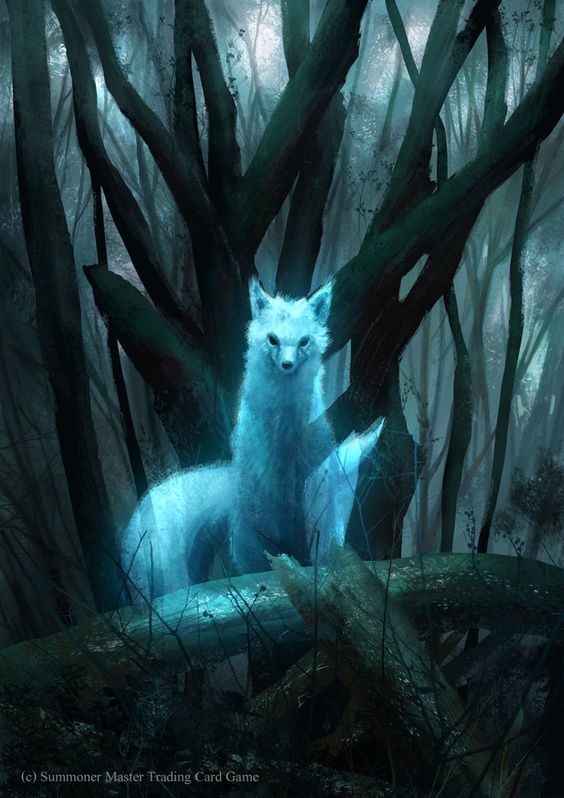
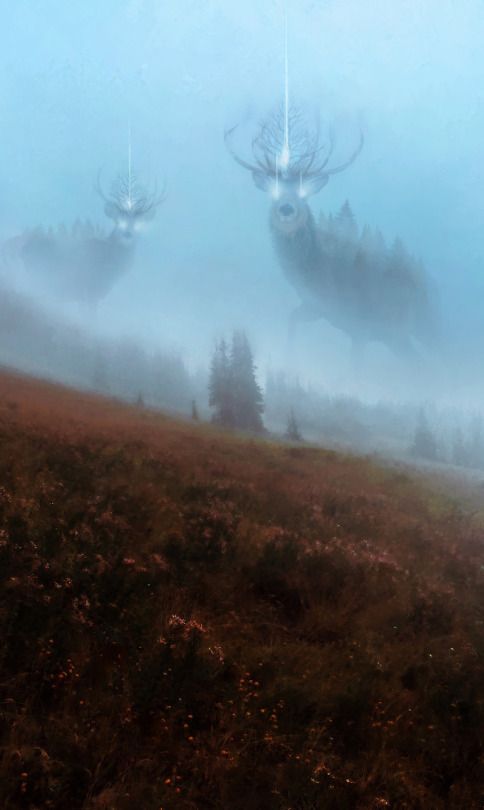
Beasts, non-human animals, are part of the spiritual and magical world, too. Their spiritual lives differ from ours, but contact with them is a major element in human magic.
Human souls do not usually reincarnate, but animal souls do. Oversouls are where animal souls come from and return to between incarnations. They are both a font of life-force and a collective unconscious for their animal taxon. They do not rule, guide, or guard. They are not, in themselves, very personal.
Humans have no Oversoul. Our eschatology is quite different. There are also magic-capable species of animals—various members of the crows, parrots, primates, and cetaceans—without Oversouls; their afterlife is to become fays.
Oversouls are not organized as individuals. The Grizzly Bear Oversoul is part of the Bear Oversoul, and Bear is part of Carnivore, which is part of Mammal.
Oversouls are as much places as persons. They are where the souls of their creatures return at death. Borderline-sentient creatures are absorbed back into their Oversoul. More individuated ones reincarnate for a while, then may go on to Paradise or graduate to yaoguai.

Yaoguai are special animal souls. If an animal soul has had several remarkable lives in succession, or heavy exposure to magic, or other stimulating circumstances, it may become a yaoguai. Yaoguai are humanly intelligent and capable of magic.
The most familiar examples of yaoguai are the Chinese and Japanese "fairy foxes," the kitsune. The legend is that if a fox lives to be a hundred, it acquires human intelligence and magical power. According to legend, it may reach that age by living near a shrine or a magical well, or by other extraordinary circumstances. But an animal can simply be born yaoguai after a sufficiently remarkable spiritual history.
Oversouls are not, in themselves, persons, but particular yaoguai can become avatars of their Oversouls. We will call such crème de la crème beast souls theriarchs or celvaturi. Examples of theriarchs in human legend are the King of the Cats and the characters in Amerind and African tales who are both individuals and species, like Coyote, Raven, Bear, and Wolverine.
Theriarchs are mythically powerful but not immortal: Coyote gets killed fairly often, and the King of the Cats is famous mostly for his funeral and the subsequent succession issues. An Oversoul may have more than one theriarch, perhaps each one representing a different aspect or issue for the Oversoul. Or it may have none, though this is usually a temporary situation.
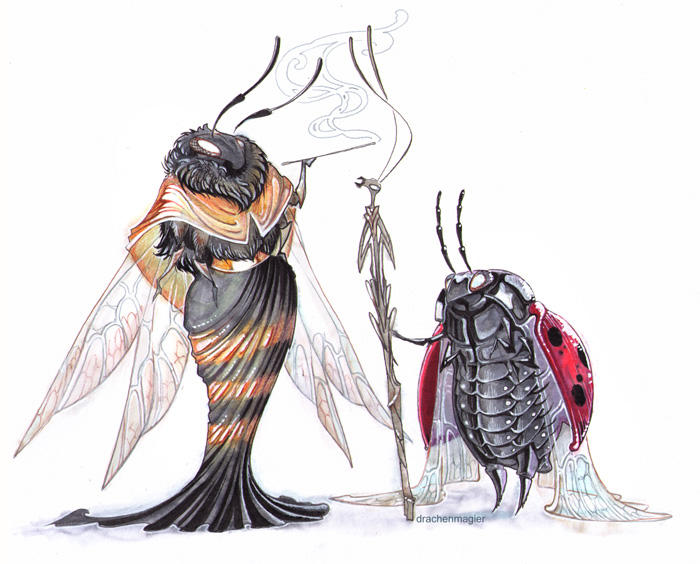
insects were insects
when man was only
a burbling whatisit
—archy (Don Marquis)
One class of yaoguai of particular note are the maphgia, the yaoguai of sub-sentient, unaware animals, notably insects and other arthropods. These animals don't have individual souls to reincarnate, so maphgia arise directly from their Oversouls. Since there's very little animal mind to get in the way or to work from, maphgia are not much colored by their insectile nature. The result is that they are in some ways very human-like—or as human-like as sapient, magic-working insects can be. They are very, very old, and so, being immortal, have accumulated in vast numbers and worked up great skill and power in magic.
They are, as you will have guessed, the inspiration for "bug fairies."
Yaoguai can learn any kind of magic human mages or fays can. They cannot teleport as djinn can. They can shapeshift, but it is very unusual for them to do more than alternate between their native animal form and a human form, or to mix the two.
Yaoguai are commoner than fays and about as common as djinn in eastern Asia. The fox yaoguai, kitsune, are famous.
Yaoguai are the dominant type of magical people in the Americas and in Africa. Many were prominent in the Egyptian pantheon.
There are yaoguai in Europe, too, though. Examples include selkies, sapient corvids and foxes (indistinguishable from fays in those forms, to mortals), and the King of the Cats and his court. Balios and Xanthos, the immortal talking horses of Achilles, may have been horse-shaped titans, or they may have been high-level horse yaoguai. The maphgia, the "bug fairies," have their main Earthly territory in Europe; once again, mortals will have difficulty distinguishing them from fays in insect shape.
Almost all of them hate and fear us, or at least view us with alarm. Why would they not? Against that:
Because of our Stewardship, we can take individual animal souls with us to Heaven. It doesn't matter who died first, human or beast, the bond of love means that the beast is waiting there when the human dies or the human comes when the beast dies.
How the Oversouls feel about this has nothing to do with how the individual beast souls feel. The attitude of the Oversoul is the attitude of the current theriarch. "Losing" a soul to Heaven does not diminish the Oversoul, but a theriarch may regard it as theft or kidnapping. Or not. Dog has always been delighted to have all dogs go to Heaven. But Dog is only one theriarch within the Canine Oversoul and is not in agreement with Wolf, Coyote, Jackal, and Dingo. Of course Dog loves us, being our creation; the others hate and fear us. But that is the individual theriarchs. Other canine yaoguai and other individual animals can feel differently.
Cat loves us, too. Kine, Sheep, Chicken and other farm animals give us a colder, more pragmatic, conditional approval: we keep up head count, but our usual treatment of individual animals and our habit of creating weird breeds are unwelcome.
You can investigate the social and anthropological aspects of totems elsewhere, but esoterically, supernaturally, totems are a way for an Oversoul to make peace with a group of humans. The humans will respect and sometimes even aid the beasts of the Oversoul, and the Oversoul reaps a modest but steady harvest of prana from the humans.
A member of a totem has their use and production of prana cut off if they are involved in the injury or death of their totem. They may also incure some bad luck. Deliberate intent makes it worse, but the cut-off happens without it; this is a matter of ritual "cleanness," not morality. Some considerable time or some expiational austerities are necessary to restore the prana flow.
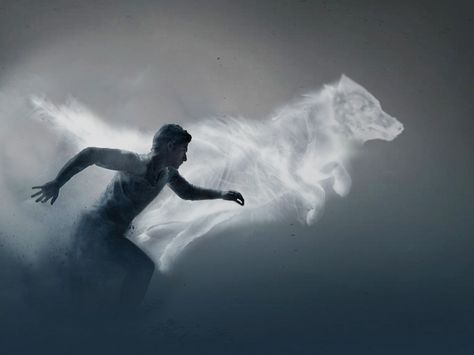
A therianthrope is a human who has acquired the ability to take animal shape, a were-beast. The most famous instance is the lycanthrope, the werewolf. But there are many other therianthropies: coyote, jaguar, tiger, lion, bear, shark—mostly big predators, you will note.
There is fake therianthropy, done with glamour, ectoplastic costuming, or seemings, not real shapeshifting, but true therianthropy is a true shapeshifting: that is, the magic does not sustain an illusion of the animal form. Rather, it makes an actual change of form. There is no magic running while the therianthrope is in animal form. The new shape is completely real, down to metabolism and neural anatomy.
All that detailed genetic information has to come from somewhere. That means the therianthropist is "hacking into" the Oversoul of the animal form, painful and harmful to the Oversoul unless the access is given freely. Outside totemic relationships, it generally isn't, not to humans. The werewolf curse, after over-hunting and creating Dog, is humanity's third crime against Wolf. (But note there are werewolves who are not accursed, like the Irish wulver and the Italian benandante.)
The therianthropist is not necessarily the therianthrope. That is, the person casting the shape-changing spell is not necessarily the person who changes shape. You can be changed by a third party, as in the curse example.
Therianthropy is not a "transubstantiation" because the other, human form is still latent in the therianthrope, available for the return transformation.
Therianthropy is usually the culminating stage of thematic magic where the theme is the animal in question: hawk magic, buffalo magic, etc. But true shapeshifting is actually beyond human power, so therianthopists must call on other help—fay, jinn, a yaoguai, maybe even a theriarch of the Oversoul itself, as part of a deal or scheme, or as a curse.
Short of such superhuman help, human mages of animal themes can do no better than astral projection in human form, or at most seemings.
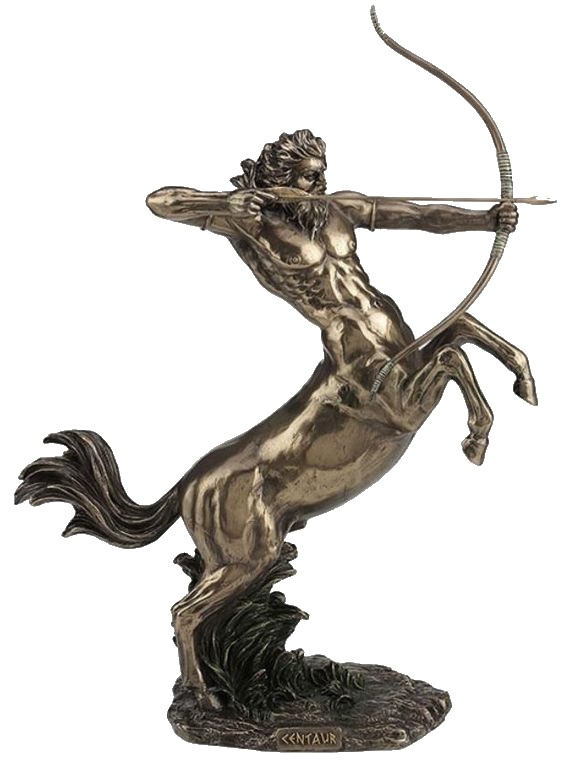
Transformations are the converse of therianthropes. Merfolk, satyrs, centaurs, scorpion folk, and sphinxes were created by the Animal Powers, to be their agents within the Steward race and to provide access to the human-specific powers of Stewardship. But very few transformations know this. They only know they were transformed by some piece of immemorial magic, passed down from a misty antiquity. Very rarely do the transformed humans meet yaoguai, much less theriarchs. They would then most likely get along famously with these half-cousins, but then what could be more natural? Of course. The Animal Powers arrange nature.
A yaoguai is about as powerful as a moderately powerful fay, though with different specializations. But an Oversoul, in the person of one of its theriarchs, is more powerful than any fay that is not successfully playing god. Fortunately for fays, they and yaoguai don't share much territory, and yaoguai don't care much about fays one way or another, though they find the species-shifting unsettling.
The main "relationship" between fays and the Animal powers is a negative one: the Animal Powers do not allow fays to do shapeshifting into exact copies of their species. So the fays uses workarounds such as these:
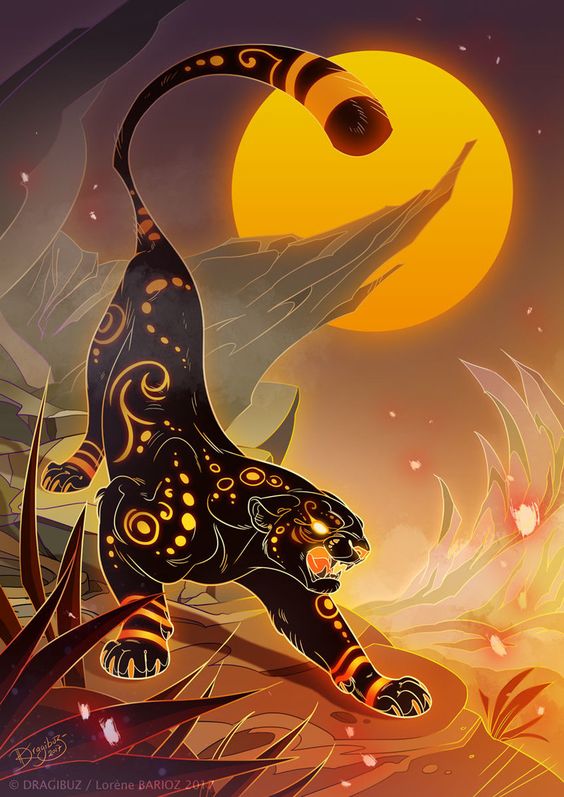
Relations between the Animal Powers and the djinn are like those between them and fays, but the djinn are much more powerful. If a djinni wanted to make an exact copy of an extant animal, the Oversouls would probably keep their grumbles to themselves. But in fact the djinn seldom bother to be that realistic; if a djinni takes the form of a dog, it is fairly likely to be translucent violet or thirty feet tall or otherwise distinctively djinnish.
Eldila are more powerful than djinn at a minimum, so their relationship to the Animal Powers is what they choose it to be. Often, though, this means no apparent relationship at all. Animals don't deal in good and evil, so temptation and ministries of grace are absent in relations with the Oversouls.
Theriarchs and other yaoguai are moral agents, but they exist in tiny numbers and their beast-cultures generally exist as esoteric sub-cultures within human cultures. So eldila do not provide separate Principalities to guide yaoguai societies.
The distinctive relationship between eldila and Animal Powers is that high-level eldila—that is the Valar, and the Oyeresu above them, and the Dominations above them—are in charge of guiding the physical and biological evolution of the world, but it is unlikely that the Oversouls are directly aware of this.